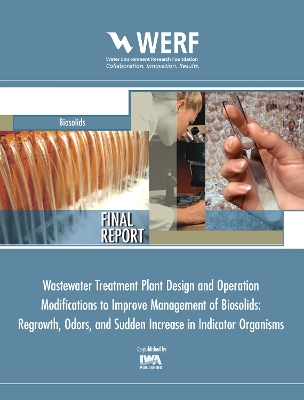Available as eBook only
The overall goal of this project was develop approaches to manage the issues of regrowth, odors, and sudden increase (ROSI) of indicator and pathogenic bacteria in biosolids.
The project entailed two phases. The first phase was focused on filling critical research gaps that provided the fundamental insights for developing solutions to these issues which includes method development. The second phase focused on developing and implementing solutions in the field.
The hypothesis that sudden increase is a result of incomplete inactivation of indicators was supported by the results from this work. The results suggest that Method 1680 underestimates the viable density of indicators in samples after thermal treatment. In addition, that results showed that to achieve complete inactivation of indicators, a slightly higher time-temperature regime will be needed and this new "best practices" time-temperature curve has been developed as part of the work. It should be emphasized that the current EPA time-temperature requirements appear to be sufficient for Salmonella, the bacterial pathogen used in the regulations. Several processes that utilize temperature about 75 DegreesC were able to eliminate SI. Gas chromatography-olfactometry was used to identify the persistent/long term odorants in centrifuged biosolids. The main persistent odorants contributing to cake odors were indole, skatole, p-cresol, and butyric acid. Interestingly, all of these compounds are breakdown products of organics such as proteins, carbohydrates and fats, suggesting that processes which eliminate these precursors will help reduce odors in biosolids. Odor panel results showed that the level of odors measured after longer term storage, was correlated to the shorter term TVOSC concentrations. Mechanistically this was expected since the short term TVOSCs and longer term odorants are produced by similar pathways.
Several amendments added to centrifuge cake were able to significantly reduce odors and/or regrowth. The incubation of anaerobically digested biosolids with protein degrading enzymes resulted in additional gas production as well as a reduction in odors after dewatering. Also, better digestion was associated with lower odors, and primary sludges produced greater odors compared to secondary sludges.
- ISBN10 1780404573
- ISBN13 9781780404578
- Publish Date 15 March 2016
- Publish Status Active
- Publish Country GB
- Imprint IWA Publishing
- Format eBook
- Pages 150
- Language English
